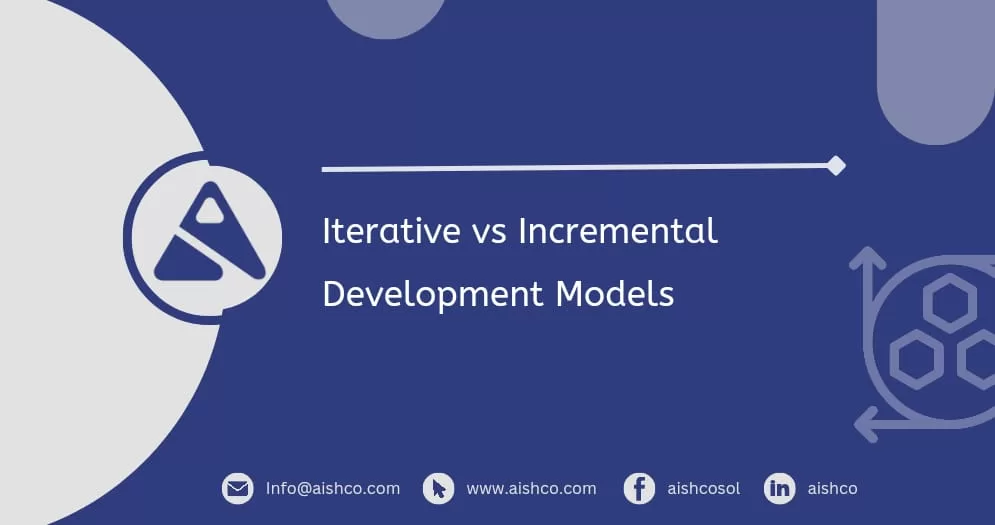Understanding the difference between iterative vs incremental development models is crucial for software developers. The key difference between iterative vs incremental development models lies in their approach to project progression. While both models aim to improve software quality, the difference between iterative vs incremental development models becomes evident in their execution. The iterative model focuses on refining and improving through repeated cycles, whereas the incremental model delivers small, usable portions of the software over time. This difference between iterative vs incremental software development model helps teams choose the best approach based on project needs.
Table of Contents
What is the Iterative Development Model?
The iterative development model is a cyclical process that involves repeatedly refining and enhancing the same set of features in a software product.
In the iterative development model, the software is built in repeated cycles (iterations), each involving planning, design, coding, and testing. Instead of delivering the entire product at once, the iterative model focuses on gradually improving the software through multiple versions, each better than the last.
Key Features of Iterative Development
| Feature | Description |
|---|---|
| Continuous Refinement | Features are continuously improved over several iterations until the final product is achieved. |
| Flexibility | Allows for adjustments based on feedback after each iteration, making the model adaptable to changing requirements. |
| Feedback Integration | Feedback from users and testing is used to make improvements in subsequent iterations. |
Advantages of the Iterative Model
| Advantage | Description |
|---|---|
| Early Problem Detection | Issues are identified and resolved early, as testing occurs at the end of each iteration. |
| User-Centric Approach | Regular user feedback ensures the final product meets customer expectations. |
| Risk Mitigation | Smaller, repeated cycles help in identifying and addressing risks early in the development process. |
Iterative Development Cycle Graph
Real-World Example of Iterative Development
Example: Mobile Application Updates
Consider a popular mobile application that regularly updates its features. The developers might first release a basic version of a new feature, then gather user feedback and make improvements in subsequent updates. Each update (iteration) refines the feature, enhancing its performance and usability.
What is the Incremental Development Model?
Definition
The incremental development model focuses on delivering the software in small, functional pieces, with each increment adding new features to the existing product.
Unlike the iterative model, the incremental development model emphasizes building the software step by step. Each increment delivers a fully functional piece of the system, which can be released and used independently. The final product is a combination of all the increments developed over time.
Key Features of Incremental Development
| Feature | Description |
|---|---|
| Functional Increments | The software is built and delivered in small, manageable parts, each offering distinct functionality. |
| Concurrent Development | Different teams can work on separate increments simultaneously, speeding up the overall process. |
| Early Product Delivery | Even before the complete system is ready, a working version of the software can be deployed. |
Advantages of the Incremental Model
| Advantage | Description |
|---|---|
| Quick Delivery | Functional parts of the software can be delivered to the customer faster than in other models. |
| Reduced Complexity | Breaking the project into smaller increments makes it easier to manage and reduces overall complexity. |
| Efficient Resource Use | Teams can work on different increments simultaneously, optimizing resource utilization. |
Incremental Development Model
Real-World Example of Incremental Development
Example: Messaging Application Development
Consider the development of a messaging application. The project could start with a basic text messaging feature. In subsequent increments, features like media sharing, voice messages, video calls, and group chats are added. Each feature is fully operational and can be released as soon as it’s ready, allowing the app to grow incrementally while providing users with new functionalities over time.
Real-World Example of Incremental Development
Both iterative and incremental models aim to deliver high-quality software, but they do so in different ways.
| Iterative Development | Incremental Development | |
|---|---|---|
| Development Focus | Focuses on improving and refining the same features across multiple iterations. | Focuses on adding new features in each increment, with minimal rework on previous increments. |
| Project Complexity | Best suited for projects where requirements are likely to change and evolve. | Ideal for projects with well-understood requirements that need to be delivered quickly. |
| Feedback Mechanism | Feedback is gathered after each iteration, ensuring continuous improvement. | Feedback is gathered after each increment, allowing for early user engagement with functional software. |
Does the Incremental Approach Use Iterations?
Choosing the Right Model
Consider the scope, complexity, and requirements of your project when choosing between these models. By aligning your development approach with the project’s needs, you can optimize the process and achieve better results.
Conclusion
The difference between iterative vs incremental development models plays a vital role in determining the project’s workflow. The primary difference between iterative vs incremental development models is in their handling of changes and progress. The iterative model continuously revises and refines the product, while the incremental model builds the software in small, functional parts. Recognizing the difference between iterative vs incremental models allows teams to make informed decisions. Ultimately, the difference between iterative vs incremental development models guides how features are developed and integrated throughout the project.
Ready to evolve your project?
Share post on



